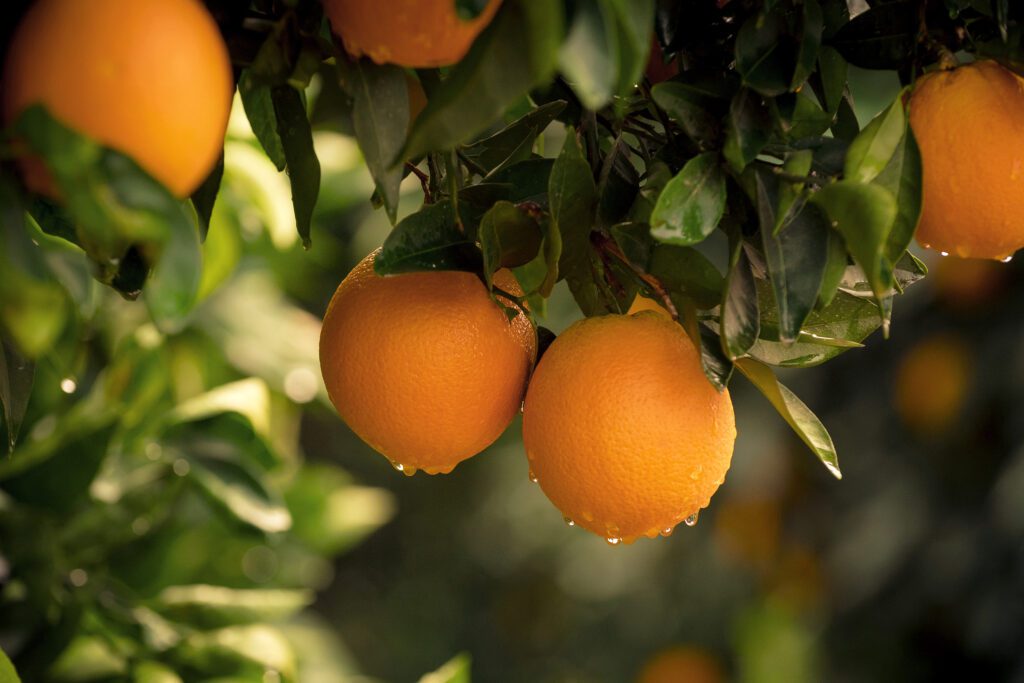Growers Speculate on Season and Challenges Ahead
Editor’s Note: The reporting and interviews for this story were done the week before Hurricane Milton swept through Central Florida and the USDA issued its official citrus forecast. Stay tuned for further updates.
by PAUL CATALA
Despite some of the setbacks plaguing citrus over the past couple of decades, Florida citrus growers are standing tough against a consistent barrage of setbacks.
Growers like Kyle Story, who have managed to stay in the industry, remain optimistic for the future of the citrus industry this season and onward despite the effects of citrus greening, freezing weather, damage from hurricanes, and the lure of big-money buyouts from real estate developers.
Story, who is vice president of The Story Companies and a fourth-generation citrus farmer, says he thinks the upcoming 2024-2025 citrus season will be steady and is expecting the same or slightly higher harvest numbers. He says there will be a continuing need for growers to work to improve tree health, minimize fruit drop, and replant trees.
“The value of our crop will continue to increase as there is healthy demand for our products, and with that increased value for Florida citrus, growers can confidently decide to replant and expand,” says Story, who’s also board chair for Florida Citrus Mutual. “A season-over-season flat box count is a victory given the loss of acreage from diseases and development pressures.”
The 2023-24 Florida citrus season held steady. The season’s final official report from the U.S. Department of Agriculture in July said orange harvest was up 1 percent from June at 17.96 million boxes and up from the 2023 total of 15.9 million boxes.
This continued, albeit miniscule, uptick in production is promising for many growers, but the amount of Florida land dedicated to growing citrus continues to shrink.
Reports by the U.S. Department of Agriculture in late August shows the state now has 17 percent fewer ag-zoned acres used for citrus than in 2023. Overall, the harvest for the 2023-2024 growing season was worth 6 percent more than it was in 2022-2023.
The annual Commercial Citrus Inventory report showed there are 274,705 acres in Florida still being used for citrus production, 57,551 acres less than the 2023 total.
The reports showed Hendry County lost 12,374 acres over the past year. Although Polk County has the most commercial citrus acres in the state, its acreage fell from 60,131 acres to 58,516 acres.
In south central Florida, Ray Royce, executive director of the Highlands County Citrus Growers Association, sees “cautious optimism” by citrus growers for the upcoming citrus season. He predicts this upcoming season will see little change from last season.
On October 11, the USDA will release its initial 2024-25 season Florida citrus forecast.
“We’ll see what their forecast is. My guess is it will be about the same neighborhood as the final yield for this past year — the 18 million range — but we’ll see,” he says.
Royce considers the rapid loss of citrus acreage to greening and hurricanes to be alarming, although he’s seen some rebound from the citrus devastation caused by Hurricane Ian in late September 2022.
“Again, there’s cautious optimism among growers because they’ll have more tools to grow citrus in the face of greening,” he says, “But some growers have quit. They’ve used reserve resources and now they don’t have money to invest and don’t want to borrow more.”
Royce says Citrus Under Protective Screening isn’t making too much difference overall and mostly benefits fresh-fruit harvests, not harvests for juice. He says citrus therapies such as gibberellic acid and oxytetracycline will help to keep fruit on the trees.
He goes on to say that with Florida’s production so low, imports can only complement the market for the upcoming season.
“If we can get a little luck and we can have some weather, and by that, I mean not too much moisture, but enough that we don’t have a hurricane and we don’t have some freezes, hopefully, we can move forward and the new trees we have planted can start to produce some fruit,” he says. “With growth regulator products maintaining good crops and harvests, it encourages the men and women in the industry to move forward. We need to catch a little bit of a break. I would say there’s ‘cautious optimism.’ ”
Matt Joyner, president and CEO of Florida Citrus Mutual, says adverse weather, disease and other pressures over the past two decades have been the main factors for declining numbers. He also mentions that Florida leads the U.S. in acreage dedicated to growing citrus.
“I’m confident that as the industry recovers from past weather events and utilizes the latest breakthroughs to combat citrus greening that growers are going to continue to replant, and we are going to see the number of Florida citrus acres grow again,” says Joyner.
Like Story, Joyner says therapies for increasing tree health, stemming fruit drop, and improving fruit quality are helping existing groves be more productive. In addition, more tolerant rootstocks and scions are showing promise, giving growers confidence to replant.
Joyner also described the sentiment on the season as cautious optimism.

“Tree health looks better than it has in several years, and thus far the weather has cooperated, so we are hopeful that continues,” he says.
Overall, Joyner says he anticipates the recovery from multiple hurricanes in 2022 and the deployment of therapies to improve tree health and productivity will be “somewhat muted by the loss of acreage experienced over the past two seasons.”
“Even with that in mind, I’m optimistic about the direction we are moving in and continue to have hope for the future of Florida’s citrus industry,” he says.

